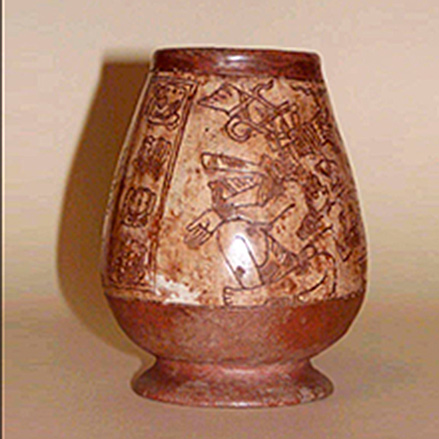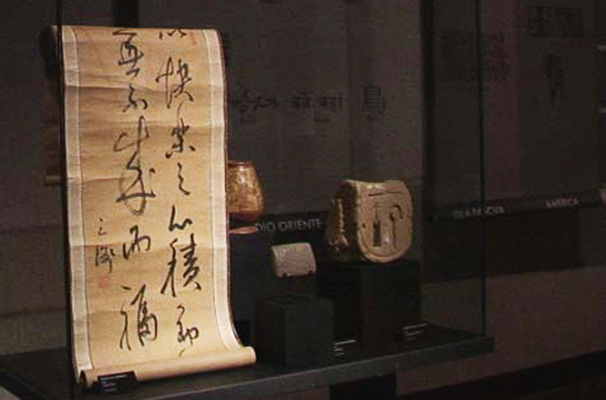Quipu: Counting with knots in the Inka Empire – 2003
- Record-keeping with knots
- The quipu and writing
- Tawantinsuyu , the Inka Empire
- The Quipu, and the needs of an empire
- Quipus and tribute
- Basic parts of a Quipu
- Making a Quipu
- Quipus and numerical values
- Narrative Quipus?
- Los distintos usos del Quipu
- Quipu of Arica
- Quipucamayoc , Lord of the Knots
- Quipus in the colonial era
- Epilogue
- To know more about Quipus
- Crédits and acknowledgements
The quipu and writing
The ancient civilizations of Mesopotamia, Egypt, China and Mesoamerica all invented independently writing systems based on “graphemes,” that is, the signs used for writing were produced by impressing marks on wet clay tablets, scratching marks on shell plaques, carving signs on limestone stelae, or painting signs on parchment. The first graphemes were primarily “logographic”; in other words, they represented objects and concepts, but were not sound-based sign units. Over time, however, phonetic graphemes, or images referring to the sounds of the names of objects, concepts and symbols were invented. Eventually, some systems of writing – the alphabets – began using signs for the most basic sounds of each language. Upon being combined, these signs formed syllables and words.
The Inkas differed from the rest of the ancient states in that they created (or inherited from an ancestral civilization) the quipu, a three-dimensional recording system based, not on graphemes, but on knotted strings.





































